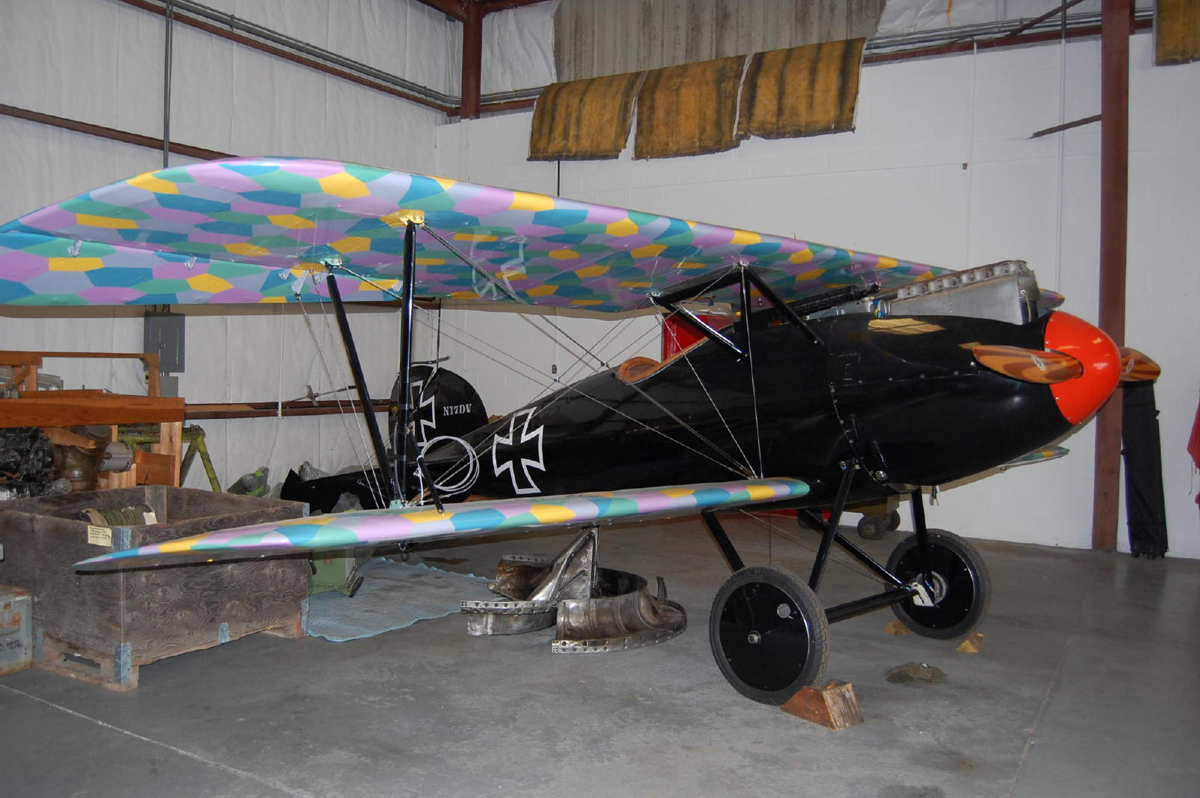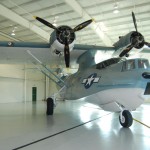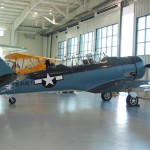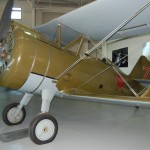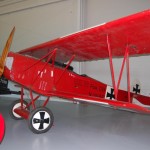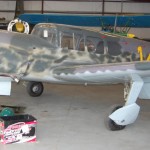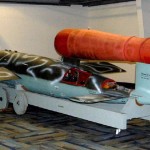
This replica Albatross, the first plane the Red Baron flew, is sporting its original paint scheme. The wing paint scheme was supposed to make it stealthy to anyone looking up.
By Henry M. Holden
More than 60 years ago, during World War II, fighter planes roared over the fields and woods of southeast Virginia. A few sleek and powerful prop-driven warplanes still do “touch and goes” on a grass strip runway, a vestige of that bygone era. When they land, however, they don’t taxi to military-style Nissan huts or revetments. Instead, they taxi over to two modern, Art Deco-style hangars of 60,000 sq. ft., located on 110 acres three miles south of Pongo, Va.
In the process of creating the Military Aviation Museum, located at the Virginia Beach Airport (42VA), owner and entrepreneur Gerald Yagen moved a 1937 checkered water tower from Kentucky as part of the fire suppression system. He also lengthened the 3,000-foot runway — still composed entirely of grass — to 5,007 feet. The grass runway, Yagen said, is well suited to old military aircraft, including a Vickers Supermarine Mk IXe Spitfire, a FG-1D Corsair and his P-51, Double Trouble Two, which are stored at the museum.
“Those warbirds were designed to take off and land on ships and fields and don’t need sleek modern runways,” he said.
The Military Aviation Museum is home to one of the largest private collections of WWII and Korean War era fighters, bombers, trainers and seaplanes. The aircraft, restored to their original WWII condition and markings, are available for flight demonstrations, static display, movie production, commercials and air shows. The museum is not normally open to the public; however, it does allow occasional visits during normal weekday working hours.

In 1942, a Russian lieutenant was flying this Hawker Hurricane when he ran into an Me 109 over Murmansk. The German shot him down, and the airplane remained lost until 1999. The preserved pilot was still sitting in the cockpit.
Yagen and his wife Elaine, long time residents of Virginia Beach, formed and created the heart of the collection. The Virginia Tech graduate bought his first plane at age 25, a Piper Cherokee. Yagen is also the founder of the Tidewater Tech colleges, now Centura College, and the Aviation Institute of Maintenance schools.
Carefully restored and meticulously maintained, the 20-plus mostly air worthy airplanes from another century include many famous nameplates: The North American P-51D Mustang, a PBY-5A Catalina (a Navy search and rescue amphibian that pulled countless airmen from the oceans during WWII), a Curtiss P-40E Warhawk, a Hurricane Mk XII and an AD-4 Skyraider. A Soviet Polikarpov I-15bis, I-153, I-16, Po-2 and others also reside in the museum.
History buffs can get up close to a TBM Avenger, the type that former President George H.W. Bush was flying over the North Pacific when Japanese gunners shot him down in 1944.
The collection is unique in that it contains some ground vehicles the German army used in WWII. The collection also includes a German buzz bomb, whose engine works but isn’t armed, and several early Japanese warbirds.
Yagen sees his passion for collecting vintage military aircraft as a natural extension of a lifelong interest in collecting. Yagen grew up in South Norfolk, attending Rena B. Wright Elementary School and Oscar Smith High School. He collected coins, comic books and stamps. As a teen, he was also interested in model airplanes.
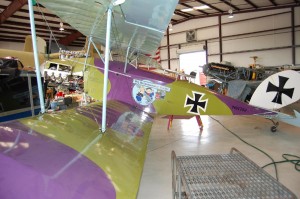
This replica of a Halberstadt was the first German biplane fighter to enter air combat. The first use of rockets by German forces was rockets fitted to a Halberstadt.
In 1969, Yagen opened a recruiting firm that matched military veterans with companies needing personnel with technical skills. That led him to take flying lessons. He felt flying was a convenient and more efficient way to travel on business.
“It was in the fall of 1994, when I was attending an annual convention held in Canada for fellow Aerostar aircraft owners,” Yagen said. “One evening, the gathering met at the Canadian Warplane Heritage Museum in Hamilton, Ontario, where we attended a dinner dance among all the many historic airplanes of the museum. It was here that I decided that it might be exciting to buy one of these historic aircraft, and fly it on weekends over Virginia Beach.”
Yagen didn’t anticipate that buying one warbird would evolve into a lifelong pursuit of collecting and restoring historic aircraft.
During WWII, the Roosevelt administration provided arms and ammunition to the Soviet Union under the lend/lease program. Curtiss-Wright built P-40 fighter planes in Buffalo, N.Y., and transported them by ship to the Middle East. After reassembly in Persia (modern day Iran), Russian pilots flew them to the eastern front, where they fought against German Messerschmitts.
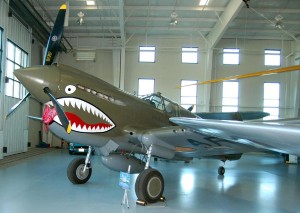
This rare and historic restored Curtiss P-40E had its first test flight in more than 50 years on April 14, 2003, in Auckland, New Zealand. It was an early addition to the museum.
Yagen’s first airplane was a Curtiss P40E, discovered frozen in the tundra near the Arctic Circle in Russia. After its recovery in 1992, Yagen bought the airframe three years later, with plans to restore and fly the old warbird. The Germans had shot down this particular airplane, part of the Lend-Lease Program, while it was protecting the far northern, warm-water seaport of Murmansk.
Flying warbirds is a different kind of flying
Yagen spent thousands of hours flying aircraft with a nose wheel, but had no flight experience with tail-wheel airplanes such as the P-40. He began looking for a tail-wheeled training aircraft so he could learn to fly and land the P-40. Word came to him that a bright yellow Stearman biplane was for sale in Texas by its owner (who had just lost his flight medical certificate). He purchased the plane over the phone and hired a pilot to fly it to Virginia in the winter of 1997. Boeing originally built these airplanes by the thousands during WWII to perform primary flight training for young pilots rushing off to war. Many of the surviving aircraft later became crop dusters; this aircraft had been restored to its original condition.
The Stearman was not heavy enough or fast enough to prepare Yagen for the speed of a WWII fighter plane, so Yagen found a low-time Navy SNJ-4 in South Africa. It had a recent engine overhaul and a unique history as a utility aircraft serving with American forces in the Aleutian Islands of Alaska, where the Japanese invaded during the war. The airplane sported the original dark blue Pacific colors — based upon a photograph found in an Alaska museum — of its operations at Dutch Harbor during the war.
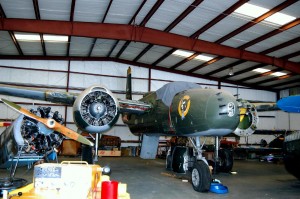
The Fighter Factory’s Douglas A-26B Invader was built in 1945, but not much is known about the military history of this plane. Purchased in 1996, the plane is in the final stages of total restoration.
While Yagen was coming up to speed in his SNJ-4, he ran into delays undergoing the restoration of the P-40.
“I hired some A&P mechanics to do the work in an office/warehouse at Norfolk Airport,” (ORF) Yagen said. “They built jigs and began work on the disassembly and reconstruction of the fuselage, but it was taking too long.”
Meanwhile, Yagen searched the world for the parts and components needed to rebuild the 50-year-old aircraft. None of the necessary parts was available from the original manufacturers and suppliers, as they had long ago gone out of business.
On one of his trips to New Zealand, in search of parts, Yagen learned that a local team was successfully completing its own P-40 restoration. They had the assembly jigs and some of the parts necessary to complete such an aircraft. Yagen decided to transport the partially restored aircraft to Auckland, New Zealand, and have them complete its restoration. Within two years, the airplane had its first test flight, painted in the markings of Tex Hill, who flew such a plane for the American volunteer group “Flying Tigers.” After disassembly, the plane traveled by ocean container to Virginia, where it’s now on display at the museum.
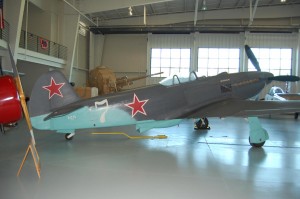
The Yakolev Yak-3 was a WWII Soviet fighter aircraft considered one of the best fighters of the war. The Yak-3 dominated the skies over the battlefields of the Eastern Front in the closing years of the war.
Yagen owns close to 60 aircraft. Some of the airplanes are off-site, including a Kingfisher, a Focke Wulf 190 and a de Havilland DH-89 Rapide, which is a large twin-engine biplane. Others under restoration reside at the Fighter Factory, the aircraft recovery and restoration component of the museum he owns, located at Suffolk Executive Airport (SFQ).
The Fighter Factory
Before any of Yagen’s airplanes join his museum’s collection, they go through the Fighter Factory, which is not normally open to the public.
Searching, documenting and recovering a WWII aircraft takes hundreds of hours and much equipment. There’s a sense of urgency in the air at the Fighter Factory to discover and recover these airplanes, since many may be lost to the elements forever. As time passes, it will become harder to trace the history of these aircraft.
“Jerry has people and feelers out all over the world,” said Dave Sylvia, one of 12 salaried workers at the Fighter Factory. His specialty is woodworking. “He’s constantly hunting for wrecks; that’s his hobby. We don’t get involved with the procurement of the aircraft. We’re like an emergency room here. We have airplanes show up in crates or on a tractor-trailer. We often don’t know they’re coming, we never know their condition and we don’t get a lot of information on the aircraft.”
Restoration is a lengthy process

Two Art Deco-style museum hangars currently house about one-third of Gerald Yagen’s collection. He has plans to add a third hangar to house his growing fleet of historic warplanes.
Researching the history of a crash site and the airplane itself is a time-consuming process and necessary for proper restoration. It’s up to the Fighter Factory to put it back together, hopefully in airworthy condition.
“Sometimes it takes years to get an airplane back into the sky,” Sylvia said. “We have a B-25 that used to fly back and forth to South America bringing snakes and other zoo animals. It was called Wild Cargo when we got it. We won’t be calling it that, though. Some people in Georgia spent five years putting it together, and then they ferried it up here. Our people spent another two years putting on the ‘finishing touches.’ It was supposed to leave for the paint shop in Canada last week, but the weather has stalled its departure. When it comes back we’ll do the detailing, and hopefully have it back in the air later this year.”
The goal of the Fighter Factory is to produce as many airborne planes as possible, but some will never be restored to flying condition.
“Some of the airplanes are in various stages of restoration, but for others, their future is in doubt because finding parts is next to impossible,” Sylvia said. “Jerry sometimes has planes restored in other countries, partly because they require parts that are no longer manufactured here. The condition of the aircraft or the cost is often the reason some will never fly again. We have a P-63 King Cobra at the museum that is an example of this. That aircraft came to us put together with chewing gum and bailing wire.”

This is a replica of one of two Fokker Dr. 1 Triplane prototypes similar to one used by Germany’s ace, Baron Manfred von Richthofen. A Blue Max recipient, Werner Voss, had 48 kills in Yagen’s replica before being shot down.
The Fighter Factory has a Mosquito that’s about two years from completion, and when fully restored, it will be only the second airworthy Mosquito in the world and the only one flying. It’s made mostly of laminated wood, which needs to be replaced. The Fighter Factory also owns a Japanese Kawasaki Ki-61 Tony.
“We have a Hawker Hurricane with a lot of history that will probably never fly again, because some parts can’t be found,” Sylvia said. “It was one of almost 3,000 airplanes sent to Russia by Britain. In 1942, a Russian lieutenant was flying it when he ran into an Me 109 over Murmansk. The German shot him down, and they found the airplane in 1999.”
According to Sylvia, the pilot was still sitting in the cockpit. The airplane was buried in a peat bog, and the pilot’s body was photographed as he was removed. His family, still living in Russia, identified his body from the photos. He had sat in that airplane for 57 years, preserved by the tannins in the peat. The airplane still had some of the original wood preserved on the fuselage. The bullet holes evident in the windscreen and on the side of the canopy were probably the kill shots.
A rare Russian Polikarpov Po-2

This Mosquito’s remains will be used to make templates. The de Havilland Mosquito was a lightweight, fast British combat aircraft made mainly of wood using advanced construction methods.
The Po-2 was very slow, but very maneuverable. When a German Me-109 tried to intercept one, the Russian pilot could turn violently and nimbly, more slowly than the 109’s 120-mph stall speed. The Messerschmitt could never equal the speed of the Po-2, because even the Russian biplane’s top speed was less than the German fighter’s stall speed.
“The Night Witches, female Russian pilots, would fly their Po-2s at night to an enemy target, cut their engines as they approached, then glide silently,” Sylvia said. “When the Germans heard the whistle of the wind against the Po-2’s wing-bracing wires, they realized that it was too late. The Night Witches would release their bombs, restart their engines when the bombs exploded, and then fly away home. It’s no wonder that Hitler offered an Iron Cross to the pilot who could shoot one down.”
About the same time as Yagen’s P-40 restoration, he located a second aircraft right in his hometown. He had heard about a rare Chance Vought FG-1D Corsair fighter stored in its owner’s backyard in the Bay Island neighborhood of northern Virginia Beach. The aircraft was in pieces, but mostly there. It was originally on display at the War Memorial Museum in Newport News, Va., which had obtained it from a local VFW Post. This rare and historic aircraft had flown off the USS Intrepid aircraft carrier in the Battle of Okinawa during WWII.
Yagen acquired the Navy Corsair, which was once a familiar sight over Virginia Beach, home of the Navy’s Oceania Naval Air Station. The Corsair was the first warplane to break the 400-mph barrier.
“The owner had it under restoration for a long time and finally decided it was too much of an effort,” Yagen said.
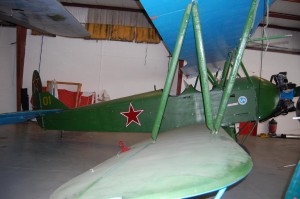
This rare Russian Polikarpov Po-2 was the type used by the Soviet Union’s Night Witches. A German Me-109 could never match the Po-2, because the biplane’s top speed was slower than the German fighter’s stall speed.
The Fighter Factory restored the airplane to airworthy condition, and it began to appear at air shows and in the TV series, “Black Sheep Squadron.” Recently, on returning from an air show, it suffered a gear collapse on landing, and the prop took 15 strikes on the runway. It’s now back at the Fighter Factory getting a new engine and having the gear repaired.
Yagen kept buying more planes.
“The more I learned about warbirds, the more I wanted to own them, and the more passionate I became,” he said.
Yagen’s collection was beginning to grow to the point where he was running out of room. He needed a larger storage and restoration facility.
“Jerry originally wanted to build the museum here at SFQ,” Sylvia said. “The city would not allow a ‘through-the-fence’ operation—that is, have the museum off the highway and a walk through the building to see the restoration facility—so he discovered a small field used for banner towing and crop dusting. It was perfect, because there was a conditional-use permit for the airport. He bought the land in 2003, and we relocated the restored aircraft to 42VA in May 2006.”

The Bücker Jungmeister trained a large number of Luftwaffe pilots in the early part of WWII. One similar to this came to the U.S. aboard the airship Hindenburg as part of Germany’s efforts to show off its advanced aviation capabilities prior to WWII.
Yagen thought he had enough space for his ever-growing fleet of historical airplanes. However, his collection is still growing, so he’s in talks with the city of Virginia Beach to build a third hangar at the museum. That hangar will be an abandoned 1939 Luftwaffe hangar that Yagen located in Cottbus, just southeast of Berlin, Germany. Yagen had the hangar and a derelict WWII control tower (both located near Lincolnshire, England) dismantled and shipped to Virginia Beach for eventual restoration.
Qualified volunteers are difficult to find
Qualified volunteers fly some of Yagen’s planes, but finding such pilots isn’t easy. Although some younger pilots are learning to fly the vintage aircraft, most of the experienced pilots are the “old timers.”
“Not every pilot can fly one of these warbirds,” Yagen said. “Unlike today’s airplanes, many of the older ones had tail wheels, and that makes a big difference. It’s not like jumping from one car into another.”
Yagen sees a new movement toward World War I-era aircraft. He recently acquired a replica Halberstadt CL-1V, a Fokker D-VII and a replica of one of two Fokker Dr. 1 Triplane prototypes similar to one used by Germany’s ace, Baron Manfred von Richthofen. A Blue Max recipient, Werner Voss, had 48 kills in Yagen’s replica before a British pilot shot him down. Yagen sees his collection adding more of these historic airplanes in the future.
For more information, visit [http://www.fighterfactory.com].
- Unlike many preserved or flying Catalinas, this 1943 PBY 5-A has a long wartime service record. Initially stationed in Norfolk, Va., it found its way to Agadir, 200 miles south of Casablanca, Morocco. After the war, it served with the U.S. Coast Guard.
- The Messerschmitt Bf 108 began not so innocently enough, as a product of the Treaty of Versailles. Work will continue for a few more years on this aircraft before it takes to flight once again.
- Yagen discovered this low-time Navy SNJ-4 in South Africa, but it served during WWII in Dutch Harbor, Alaska.
- This P-51 Mustang, Double Trouble Two, is one of Gerald Yagen’s favorite airplanes.
- The Soviet air force used the Polikarpov I-15bis until 1945, and Mongolia for several years thereafter. It had amazing combat performance due to its gull-shaped top wing that allowed the plane to do a complete turn in eight seconds.
- In search of a mono-wing trainer to replace the Tiger Moth, de Havilland developed the single-engine Chipmunk. The first Chipmunk flew in 1946 & quickly became the primary two-seat trainer for RCAF. The Fighter Factory acquired this 1952 aircraft in 2004.
- The Military Aviation Museum’s mascot is an Art Deco version of Yagen’s Chance Vought FG-1D Corsair.
- The Fighter Factory’s Hawker MK 11 Sea Fury is the naval configuration of the Fury, which traces its design to a German Focke-Wulf FW, captured when a German pilot mistook a British airfield for a Luftwaffe landing site.
- The Fokker D.VII was a German WWI fighter aircraft. The Armistice ending the war required Germany to surrender all D.VIIs. The aircraft saw continued widespread service with many other countries in the years after WWI.
- This Stearman PT-17 wears the traditional prewar Navy paint scheme, with red band to signify it’s an instrument trainer. The Navy pilots nicknamed these aircraft the
- After WWII, the British gave this Spitfire to the Italian government to help it re-establish its own air force. A few years later, the Italians sold the airplane to the new country of Israel, which was fighting for its independence.
- The Messerschmitt Me208 began production toward the end of the WWII. This four-seat liaison airplane has a top speed of 193 mph and a range of 753 miles.
- This German V1 buzz bomb’s engine works, but isn’t armed. The “V” stood for Vergeltungswaffe or “vengeance weapon.” Known to Londoners as the “buzz bombs” or “doodlebugs,” these flying bombs made a very distinct sound as they flew overhead at low altitude
- The Polikarpov I-153 was the third version of the I-15 aircraft. The Soviets initiated the design and development of this version, believing that biplanes would still play a major role in future wars.











